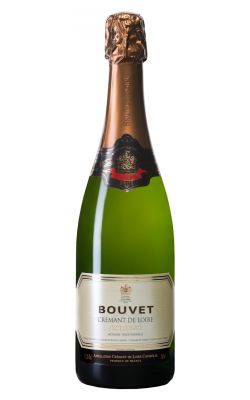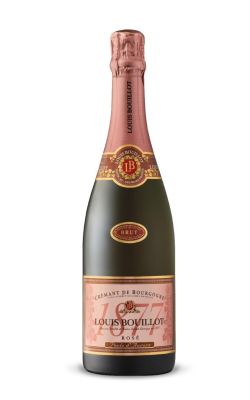Sparkling wine is one of the most charming wine styles. No one says no to a glass of fizzy wine! It’s easy to see why we commemorate special occasions with sparkling wine - it is naturally celebratory. Still, there is more than one type of sparkling wine. In fact, there are several production methods used worldwide to achieve a similar goal, and each results in distinct wines.
Here are the most common (and some uncommon) ways of making sparkling wine - the world’s most sophisticated and refined wine style. After reading this quick guide, you’ll be able to choose your next sparkler confidently. How is sparkling wine made? That’s a great conversation starter right there.
Not All Sparkling Wine Is Created Equal
Some bottles of sparkling wine, particularly Champagne, sell for hundreds if not thousands of pounds. At the same time, your local convenience store probably has a few bottles of fizz at a discount. How can the category be so diverse? After all, aren’t all sparkling wines the same thing?
It turns out the production method used to make the wine partly determines its cost and, ultimately, its price. Although well-known brands can sell their wines at a premium, the price of most bottles of wine is based on the time and effort invested into making them. The most complicated way of infusing wine with bubbles is the Traditional Method.
The Traditional Method
The Traditional Method, AKA Méthode Champenoise, was perfected, if not developed, in Champagne. In fact, producers in the cold French region must make their sparkling wine with this precise method by law. The result is a complex wine with a refined palate, to say the least.
It all starts in the vineyard. The grapes are picked and sent to the cellar. Here, the winemakers press the grapes, both white and red, to get a clear juice. This juice is turned into a base wine not dissimilar to dry white wine, which the French call it a “cuvée”.
Producers might blend different base wines, sometimes combining wine made with different grapes from different vineyards or even distinct vintages. Ultimately, the still-not-bubbly wine is bottled with an extra dose of sugar and yeast, which turn the wine into sparkling wine, and topped with a crown cap.
What makes sparkling wine made with the Traditional Method unique is this second fermentation in the bottle.
After the added yeast consumes the sugar and turns it into alcohol and carbonic gas, producers age the wine “on its lees” (the dead yeast particles) to gain complexity. Lees ageing adds aromas and flavours of toast, bread-like pastry and creaminess.
Finally, producers remove the dead yeast, give the sparkling wine its final sweetness and bottle it for sale.
Wines Made with the Traditional Method
Champagne is the most famous wine style made with the Traditional Method, but there are many others. French winemakers outside Champagne emulate the style and label their wines as Crémant.
Spanish producers make Cava following the same basic steps, and so do Italian winemakers in Franciacorta and Trento. English sparkling wine producers often make their now-trendy fizzy wines with the Traditional Method as well, and they’re not alone. South Africa has its Cap Classique, and, basically, every quality-minded producer worldwide uses the Traditional Method to craft their finest sparklers.
Champagne to try:
CHAMPAGNE JEAN-PAUL DEVILLE Carte Noire NV
SOPHIE BARON Grand Réserve Brut NV
JOSEPH PERRIER Cuvée Royale Brut Blanc De Blancs NV
JOSEPH PERRIER Cuvée Royale Brut NV
CHARLES HEIDSIECK Brut Réserve NV
PIPER-HEIDSIECK Rare Champagne Millésime 2008
Crémant to try:
BOUVET-LADUBAY Crémant de Loire Brut NV
JEAN-CLAUDE BOISSET JCB No. 21 Crémant de Bourgogne Brut NV
LOUIS BOUILLOT Perle d'Aurore Crémant de Bourgogne Brut Rosé NV
Cava to try:
CODORNÍU Anna de Codorníu Blanc de Noirs Cava NV
C.V.N.E Roger Goulart Gran Cuvée Gran Reserva Cava 2017
Franciacorta to try:
BELLAVISTA Alma Franciacorta Gran Cuvée Brut NV
BELLAVISTA Franciacorta Rosé Brut Vintage 2016
CA' DEL BOSCO Annamaria Clementi 2013
CA' DEL BOSCO Annamaria Clementi Rosé 2013
English sparkling wine using traditional method to try:
RIDGEVIEW Fitzrovia Brut Rose NV
NYETIMBER Cuvée Chérie Demi-Sec NV
RIDGEVIEW Rose de Noirs Brut 2016
RIDGEVIEW Blanc de Noirs Brut 2015
NYETIMBER Blanc de Blancs 2014
RIDGEVIEW Blanc de Blancs 2015
Cap Classique to try:
ANTHONIJ RUPERT L'Ormarins Brut Classique MCC NV
ANTHONIJ RUPERT L'Ormarins Brut Classique Rosé MCC NV
ANTHONIJ RUPERT L'Ormarins Blanc de Blancs MCC 2017
GRAHAM BECK Yin & Yang - Duo Gift Pack 2016
KLEINE ZALZE Méthode Cap Classique Chardonnay/Pinot Noir Brut NV
VAN HUNKS Méthode Cap Classique Brut NV
VAN HUNKS Méthode Cap Classique Rosé NV
KEN FORRESTER WINES Sparklehorse MCC 2018
The Tank Method
The Tank Method or Charmat Method (perfected by Eugène Charmat in 1907), is the second-most popular sparkling wine production technique.
To make wine this way, winemakers start similarly to their French counterparts - they grow and pick their grapes, vinify them to get base wines and blend them before turning them into sparkling wine. Here’s where things vary: In this production method, winemakers encourage the second fermentation in large, pressurised stainless-steel tanks with controlled temperature, not in a bottle.
This more economical and practical way of turning still wine into sparkling wine results in less expensive wines, but that’s not all. Since the wine spends less time with its lees (dead yeast) it doesn’t develop bready, bakery-like aromas. Instead, Charmat sparkling wine is bright and fruity.
Wines Made with the Tank Method
The most popular wine made with the Tank Method is Prosecco. Asti is another well-known sparkling wine that relies on this process to gain its fizz. Several inexpensive German sparkling wines are made with the Tank Method as well, and so are most wines in the value range.
Prosecco to try:
BISOL Jeio Brut Valdobbiadene Prosecco NV
CA' MORLIN Prosecco Frizzante NV
SACCHETTO Fili Prosecco DOC Extra Dry NV
BISOL Jeio Prosecco Brut Rosé 2020
CA' MORLIN Prosecco Superiore Spumante Asolo DOCG NV
BISOL Prosecco Valdobbiadene Brut Crede 2020
BISOL Cartizze Valdobbiadene Prosecco Superiore 2020
DELLA VITE Prosecco Superiore with Gift Box NV
Asti to try:
ANTINORI PRUNOTTO Moscato d'Asti DOCG 2021
G.D. VAJRA Moscato d'Asti 2021
The Ancestral Method
The third most important way of making sparkling wine is using the Ancestral Method, one that predates all others. During this process, the grapes are pressed and fermentation started by adding yeast and sugar in a tank. The fermentation is stopped part way through by chilling the wine and filtration. The wine is aged in this way for a time period. Then the wine is bottled and fermentation is completed in the bottle using the Traditional Method (riddling & disgorgement), trapping the CO2 in the bottle.
Experts believe the Ancestral Method was discovered by accident when one or several winemakers bottled their wines during a cold winter without knowing the yeast hadn’t finished fermenting the sugar in the grape must — the microorganisms were just taking a nap due to the freezing temperatures. The fermentation resumed in spring!
Wine made with the Ancestral Method includes the French Gaillac, Bugey Cerdon and Blanquette de Limoux. Modern Pét Nats or Pétillant Naturel wines are made with this rustic process as well.
Pet Nat to try:
CHÂTEAU TOUR DES GENDRES Pétillant Naturel 2021
BIRICHINO Pétulant Naturel Malvasia Bianca 2019
CRUSE WINE CO. Ricci Sparkling St. Laurent Pétillant Naturel 2020
CRUSE WINE CO. Sparkling Rancho Chimiles Valdiguié Pétillant Naturel 2020
Other Sparkling Wine Production Methods
There are several other ways of adding bubbles to wine. Some are complicated, like the Continuous AKA Russian Method, similar to the Tank Method but continuous - the wine passes from one tank to another during the second fermentation and yeast is added throughout the process.
Then you have the less desirable production method known as carbonation. Just like soft drink companies inject CO2 into their beverages while in a pressurised tank, bulk sparkling wine producers can use the Carbonation Method to add fizz to their wines with little effort. This method results in low-quality wine with large bubbles that dissipate quickly.
How to Choose?
Undoubtedly, artificially carbonated wines and wine-based beverages are best avoided, unless you’re making cocktails. You’ll find excellent value and astounding quality in most wines made with the Traditional (Champagne) and the Tank (Charmat / Italian) methods. The rare wines made with the Ancestral Method are equally delicious!
Making sparkling wine is no easy feat; it takes time and effort, so there’s passion behind every bottle of sparkling wine. So, how to choose? If you like yeasty, bakery aromas in your flute glass, a Traditional Method sparkling wine is for you, and it doesn’t need to be Champagne! If you’re into fruit-forward, clean-cut sparkling wine, you’ll find those made with the Tank Method charming.
Sparkling wine might be the ultimate celebratory wine style, but you need not wait for a special occasion to pop open a bottle of fizz. Every time you open a bottle of bubbles, it’s a celebration!

























































